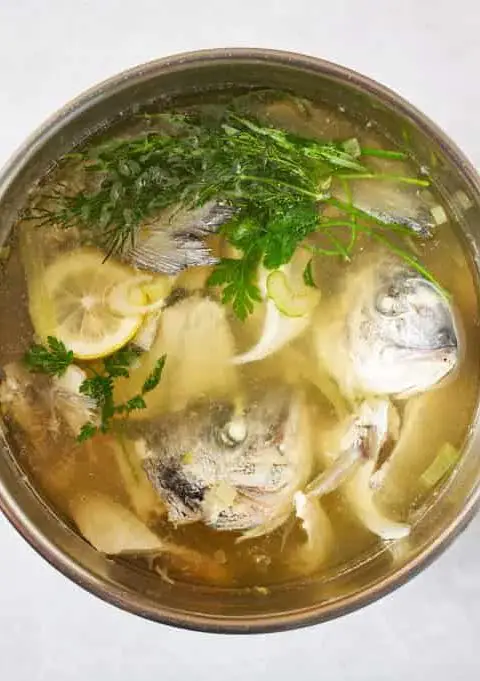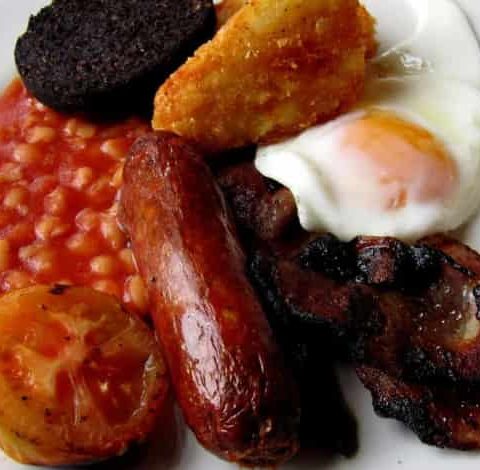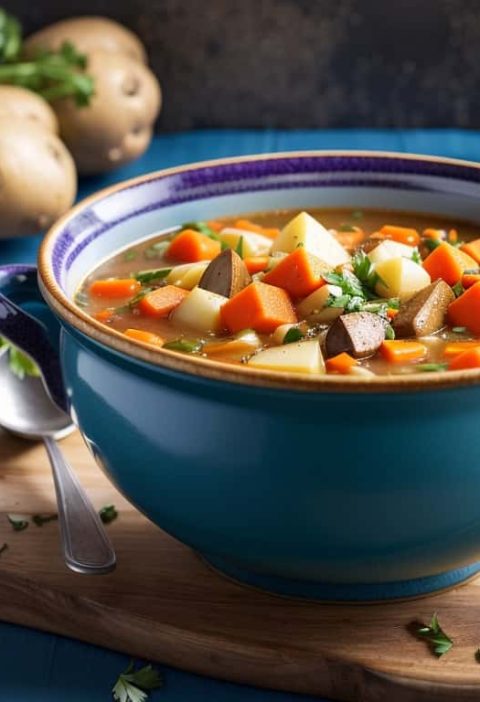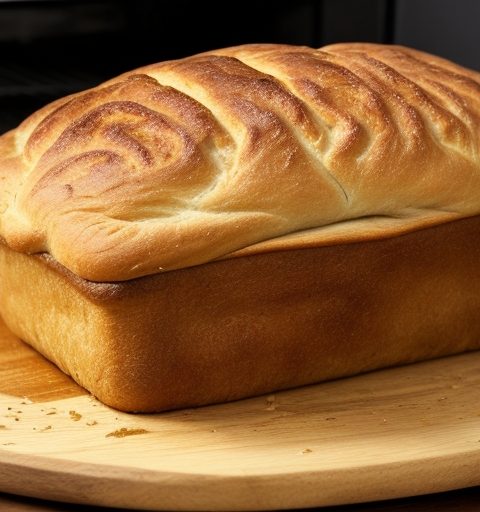Lamb is a delicious and versatile meat that can be enjoyed in many ways. But one of the best methods to cook lamb is to slow-cook it. Slow cooking lamb allows the meat to become tender, juicy, and full of flavor. It also makes the most of the cheaper and tougher cuts of lamb that are often overlooked.
But which cuts of lamb are best for slow cooking?
And how do you prepare and cook them to get the best results?
In this comprehensive guide, I will answer these questions and more. I will also share some tips and tricks to make your slow-cooked lamb dishes even more delicious.
What is slow cooking?
Slow cooking is a culinary technique that involves cooking food at a consistently low temperature for an extended period. This method is particularly effective for tougher cuts of meat, such as lamb shoulder, shank, or neck, which are rich in connective tissues. As these meats cook slowly, the connective tissues break down, releasing collagen and gelatin. This process not only tenderizes the meat, making it succulently soft but also adds a rich, velvety texture and depth of flavor to both the meat and the sauce. Slow cooking can be achieved using various methods, including an oven, a stovetop, or specialized appliances like slow cookers or crockpots.
Slow cooking also enhances the flavor of the meat, as it allows the spices, herbs, and aromatics to infuse the meat and the sauce. This is a great way to make hearty and comforting dishes that are perfect for cold weather or special occasions.
- Related: Basics of a Casserole
What are the benefits of slow-cooking lamb?
Slow-cooking lamb is not just a culinary technique, but a pathway to numerous benefits, enriching both the cooking experience and the final dish:
- Economical Choice: Slow-cooking is particularly budget-friendly. It enables the use of more affordable lamb cuts that are often overlooked, such as shoulder or shank. These cuts, while less expensive than premium options like loin or rack, are packed with flavor and gain a delightful texture through slow cooking. Additionally, buying larger or bone-in cuts can be more cost-effective, offering the bonus of enhanced flavor and added nutrients from the bone marrow during the cooking process.
- Ease of Preparation: This method is notably low maintenance and user-friendly. Once the initial preparation of seasoning and, optionally, browning the meat is done, the rest of the process requires minimal intervention. Slow-cooking is forgiving, reducing the risk of overcooking or drying out the meat. It’s also convenient for advance preparation, with dishes often tasting even better when reheated, making it ideal for meal planning.
- Culinary Versatility: Slow-cooking lamb opens up a world of flavor possibilities. It’s a method that invites experimentation with a wide range of spices, herbs, sauces, and vegetables. This flexibility allows for the creation of a diverse array of dishes, spanning various cuisines – from a Moroccan lamb tagine, rich with spices, to a comforting Greek lamb stew, or an aromatic Indian lamb curry. Furthermore, slow-cooked lamb can be adapted to many serving options, pairing beautifully with staples like rice, couscous, bread, pasta, or mashed potatoes, making it a versatile choice for any meal.
Which cuts of lamb are best for slow cooking?
The best cuts of lamb for slow cooking are the ones that have a lot of connective tissue, fat, and bone. These cuts are usually from the shoulder, leg, or neck of the lamb. They are tough and chewy when cooked quickly, but they become tender and flavorful when cooked slowly.
Some of the best cuts of lamb for slow cooking are:
- Lamb’s shoulder. Lamb shoulder is a large and meaty cut that can be bought whole, halved, or diced. It has a lot of fat and connective tissue, which makes it ideal for slow cooking. Lamb shoulder can be cooked as a roast, or cut into chunks and used for stews, curries, or pies. Lamb shoulder is also known as lamb blade or lamb arm.
- Lamb shank. Lamb shank is the lower part of the lamb leg, which is usually sold as a single piece. It has a lot of bone and connective tissue, which gives it a lot of flavor and gelatin. Lamb shank can be braised in a rich sauce, or cooked in a broth with vegetables and herbs. Lamb shank is also known as lamb knuckle or lamb trotter.
- Lamb’s neck. Lamb neck is a long and thin cut that can be bought as a whole piece, or sliced into rings. It has a lot of bone and connective tissue, which makes it very tender and moist when slow-cooked. Lamb neck can be used for soups, stews, or casseroles. Lamb neck is also known as lamb scrag or lamb collar.
Other cuts of lamb that can be used for slow cooking are:
- Lamb’s breast. Lamb breast is the belly part of the lamb, which is usually sold as a flat piece or rolled and tied. It has a lot of fat and connective tissue, which makes it very succulent and rich when slow-cooked. Lamb breast can be stuffed, roasted, or braised. Lamb breast is also known as lamb belly or lamb flap.
- Lamb’s leg. Lamb leg is the hind part of the lamb, which is usually sold as a whole piece, or cut into smaller pieces. It has less fat and connective tissue than the shoulder, but it still benefits from slow cooking. Lamb leg can be roasted, or cut into chunks and used for stews or curries. Lamb’s leg is also known as lamb hindquarter or lamb gigot.
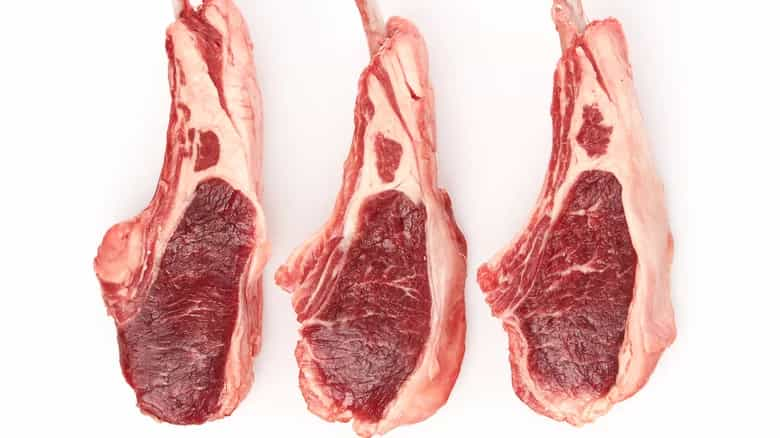
How to prepare lamb for slow cooking?
Before slow-cooking lamb, you need to prepare it properly.
Here are some steps to follow:
- Trim the Fat: Lamb is known for its fatty content, which can result in an overly greasy dish. Begin by trimming off the excess fat, focusing on the edges and the surface of the lamb. For an added touch, blot the lamb with a paper towel. This not only helps in removing some of the surface fat but also aids in achieving a better browning effect.
- Season for Flavor: The robust taste of lamb can be enhanced with thoughtful seasoning. Consider a blend of salt, pepper, and your choice of herbs and spices, tailored to complement both your palate and the recipe. For an infusion of deeper flavors, explore the use of marinades, rubs, or pastes. These can be applied either before or after browning, or you could opt for both to maximize the flavor profile.
- Browning – A Flavorful Touch: Although an optional step, browning the lamb can significantly elevate your dish. It adds a rich color and intensifies the flavor, both of the meat and the resulting sauce. You can achieve this by searing the lamb in a skillet over high heat, or roasting in an oven at a high temperature. Whether you choose to brown the lamb as a whole or in chunks, consider using a bit of oil, butter, or rendered lamb fat for an added flavor boost. Incorporating aromatics like garlic and onion during the browning process can also impart a delightful depth of flavor.
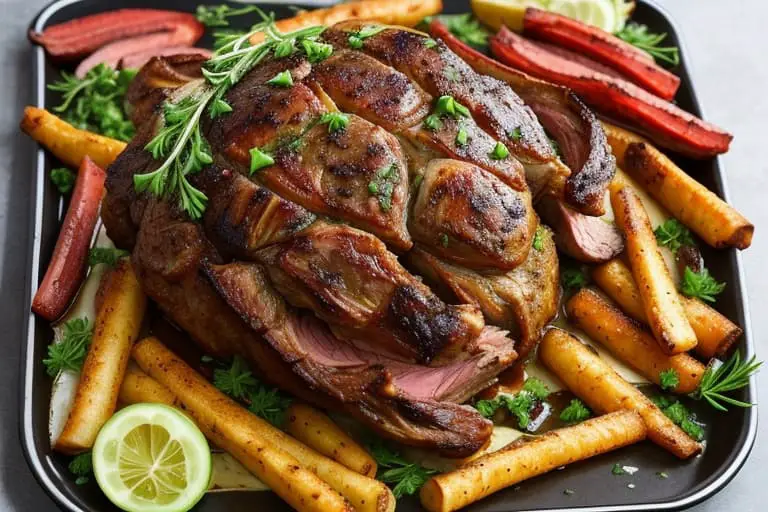
How to slow-cook lamb?
There are different ways to slow-cook lamb, depending on the equipment you have and the dish you are making.
Here are some common methods to slow-cook lamb:
- In the Oven: An oven is perfect for slow-cooking lamb, allowing the meat to gently braise in its own juices. Use a baking dish, roasting pan, or a Dutch oven, and preheat your oven to a low setting, around 160°C (320°F) or lower. Add moisture to the lamb – water, broth, wine, or juice are excellent options. Enhance the flavor with vegetables (like carrots and celery), and herbs and spices (such as bay leaves, rosemary, or thyme). Cover the lamb with a lid or wrap it in aluminum foil or parchment paper to retain moisture. The lamb should be cooked for several hours until it reaches fork-tender perfection. Periodically check and, if necessary, add more liquid. For a crispy finish, uncover the lamb in the last 30 minutes of cooking to brown the surface and concentrate the sauce.
- On the Stovetop: A large pot, saucepan, or skillet is ideal for stovetop slow cooking. First, bring the lamb and liquid to a boil, then lower the heat to maintain a gentle simmer. Similar to the oven method, add your choice of vegetables, herbs, and spices. Keep the lamb covered with a lid throughout the cooking process. This method also requires several hours, with occasional checks and liquid additions. Uncover towards the end to thicken the sauce and achieve a lightly browned surface.
- Using a Slow Cooker or Crockpot: This is a convenient set-and-forget method. Simply add the lamb, liquid, and your choice of flavorings to the slow cooker. Set it to low or high, depending on your time frame. The slow cooker will ensure the lamb stays moist and tender. Similar to the other methods, monitor the liquid level and adjust as needed. For those who prefer a browned surface, you can transfer the cooked lamb to an oven or skillet to achieve that final touch.
How to serve slow-cooked lamb?
Slow-cooked lamb, known for its tender texture and rich flavor, offers a variety of serving options.
Here are some delightful ways to present this dish:
- As a Classic Roast: Present your slow-cooked lamb as a traditional roast, either bone-in for a dramatic presentation or boneless for easy carving. Pair it with roasted vegetables, a rich gravy, and perhaps a mint sauce to complement the lamb’s deep flavors.
- Transformed into a Stew: Elevate your lamb into a hearty stew. Let the sauce and vegetables that cooked with the lamb be the stars, thickening the sauce with a touch of flour, cornstarch, or cream for richness. Enhance the stew with fresh herbs like parsley, cilantro, or mint for a burst of freshness. Serve it alongside bread, rice, couscous, or noodles to absorb the delicious sauce.
- Crafted into a Savory Pie: For a comforting meal, encase your slow-cooked lamb in pastry to create a pie. Whether topped with puff, shortcrust, or filo pastry, this pie is a crowd-pleaser. Add cheeses like feta, cheddar, or parmesan to the filling for extra savoriness. Complement the pie with a side of salad, coleslaw, or pickles for a contrast in textures.
- As a Flavorful Sandwich Filling: Create a casual yet delicious meal by using lamb in sandwiches. Shred or chop the meat and nestle it in bread, pita, or tortillas. Moisten with gravy, yogurt, or salsa, and add toppings like lettuce, tomato, onion, or cucumber for crunch and flavor. Pair the sandwich with chips, fries, or potato wedges for a complete meal.
Popular Recipes Using Slow Cooking Method
- Delia Smith Chicken Casserole
- Mary Berry Chicken Casserole
- Mary Berry Sausage Tray Bake
- Hairy Bikers Sausage Casserole
- Mary Berry Pork Casserole
- Mary Berry Sausage Casserole
- Mary Berry Venison Casserole
- Mary Berry Sausage Cassoulet
FAQs
How long does it take to slow cook lamb?
The cooking time for slow cooking lamb depends on the size and type of the cut, the temperature and method of cooking, and the desired doneness of the lamb. Generally, it takes about 4 to 6 hours to slow-cook lamb at a low temperature, such as 160°C (320°F) or lower. However, you can adjust the cooking time according to your preference and equipment. You can check the lamb for doneness by inserting a fork or a knife into the meat, and seeing if it comes out easily and cleanly.
How much liquid do I need to slow cook lamb?
The amount of liquid you need to slow-cook lamb depends on the size and type of the cut, the method and equipment of cooking, and the thickness and consistency of the sauce. Generally, you need enough liquid to cover about half or two-thirds of the lamb, to prevent it from drying out and burning. However, you can adjust the amount of liquid according to your preference and equipment. You can also add more liquid during the cooking process if the sauce becomes too thick or dry.
What are some good spices and herbs to use for slow-cooking lamb?
Lamb has a strong and distinctive flavor, which can be enhanced by using various spices and herbs.
Some of the most common and popular spices and herbs to use for slow cooking lamb are:
- Salt and pepper, season the lamb, and bring out its natural flavor.
- Garlic and onion, add some sweetness and aroma to the lamb and the sauce.
- Rosemary and thyme, add some freshness and earthiness to the lamb and the sauce.
- Cumin and paprika, add some warmth and smokiness to the lamb and the sauce.
- Cinnamon and cloves, to add some sweetness and spiciness to the lamb and the sauce.
- Coriander and mint, to add some brightness and freshness to the lamb and the sauce.
You can also use other spices and herbs, such as bay leaves, oregano, sage, ginger, turmeric, curry powder, or garam masala, depending on the dish and cuisine you are making.
What are some good side dishes to serve with slow-cooked lamb?
Slow-cooked lamb is a hearty and satisfying dish that can be served with various side dishes, such as:
- Bread, rice, couscous, or noodles, to soak up the sauce, and add some starch and carbs to the dish.
- Salad, coleslaw, or pickles, to add some crunch and freshness to the dish.
- Chips, fries, or wedges, to add some crispiness and saltiness to the dish.
- Mashed potatoes, polenta, or grits, to add some creaminess and richness to the dish.
- Roasted or steamed vegetables, such as carrots, parsnips, broccoli, or cauliflower, to add some color and nutrients to the dish.
Final Words
Slow-cooking lamb is a wonderful way to enjoy this delicious and versatile meat. It allows you to use the cheaper and tougher cuts of lamb, and transform them into tender and flavorful dishes. It also allows you to experiment with different flavors and cuisines and serve the lamb in different ways. Slow-cooking lamb is easy, economical, and versatile. It is a great method to try if you love lamb, or if you want to try something new.

